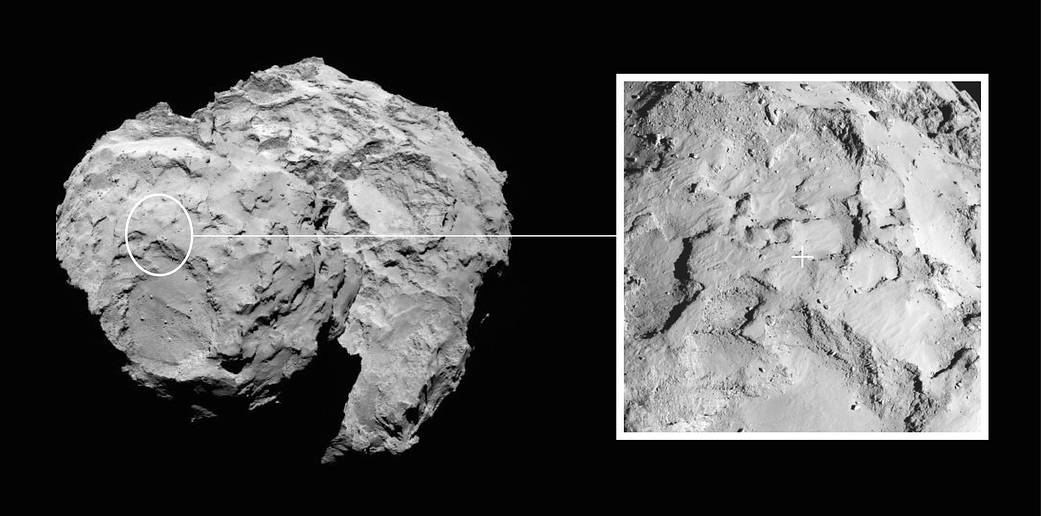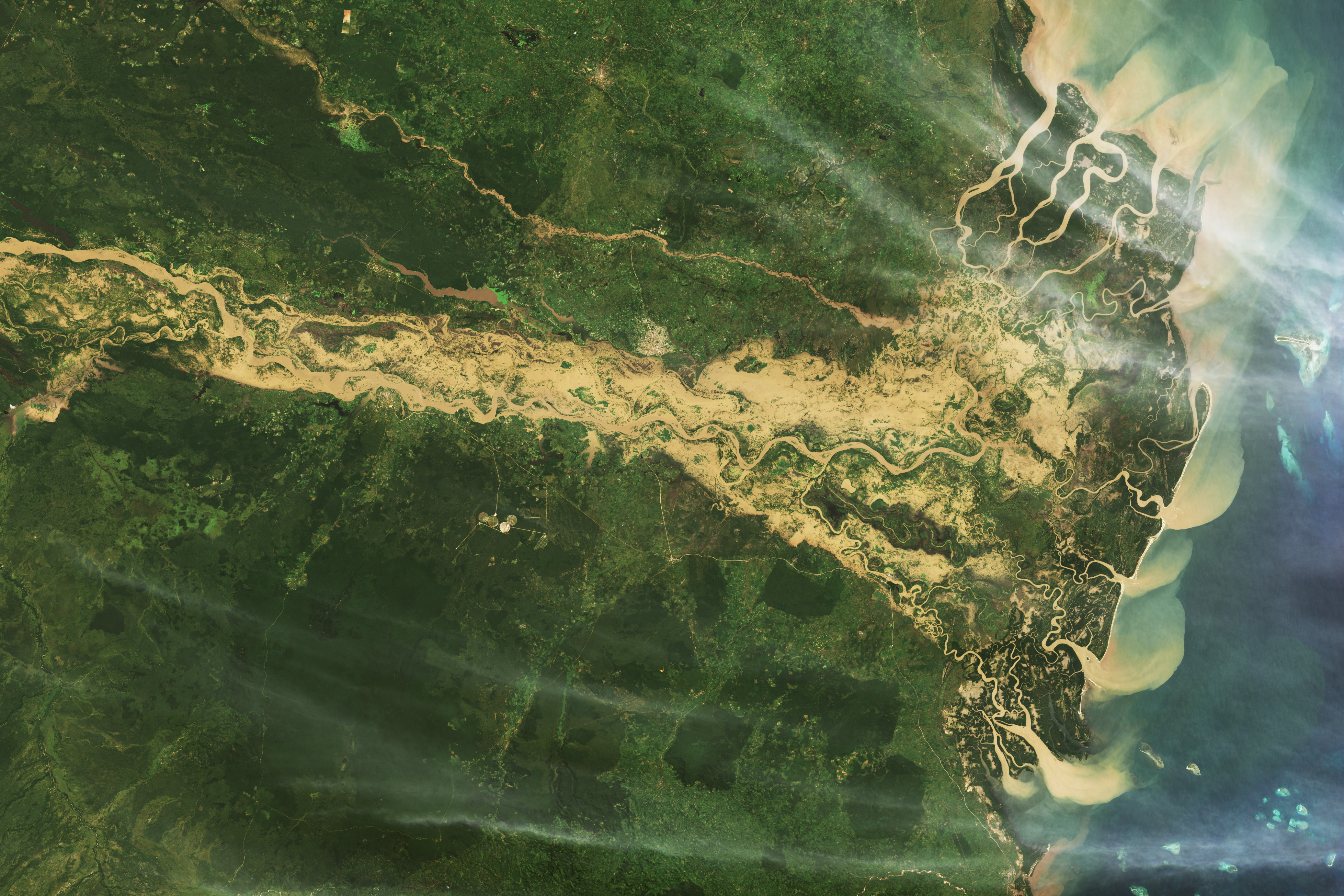
The location of the primary landing site (Site J) for European Space Agency’s Rosetta lander, Philae, is highlighted in this image. Site J is located on the head of comet 67P/Churyumov–Gerasimenko.
The large image of the comet’s nucleus was taken on August 16, 2014, from a distance of about 62 miles (100 kilometers).
The inset image to the right shows a close up of Site J. The primary landing site offers the minimum risk to the lander in comparison to the other candidate sites, and is also scientifically interesting, with signs of activity nearby. At Site J, the majority of slopes are less than 30 degrees relative to the local vertical, reducing the chances of Philae toppling over during touchdown. Site J also appears to have relatively few boulders and receives sufficient daily illumination to recharge Philae and continue science operations on the surface beyond the initial battery-powered phase.
The inset image was taken by narrow-angle camera of Rosetta’s scientific imaging system on August 20, 2014, from a distance of about 42 miles (67 kilometers). The image scale is 4 feet (1.2 meters) per pixel.
The nucleus of comet 67P/Churyumov–Gerasimenko is about 1.5 miles (4 kilometers) across. The primary landing site was chosen from five candidates during the Landing Site Selection Group meeting held on September 13 and 14, 2014.
Image credit: ESA/Rosetta/MPS for OSIRIS Team MPS/UPD/LAM/IAA/SSO/INTA/UPM/DASP/IDA



























